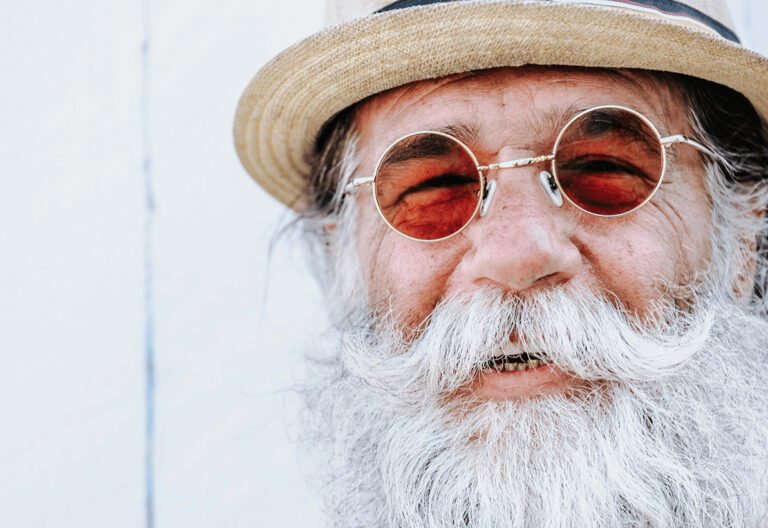Meditation is a practice where someone employs a set of techniques, such as focusing one’s mind on a particular activity, thought, object, or mindfulness, to train awareness and attention and achieve an emotionally calm and stable state and mental clearness. When it comes to meditation, there are many meditation poses that we can use. You may even opt to meditate while walking, standing up, or lying down.
Successful meditation is brought about by calm, relaxation, and comfort, so it is essential to find a pose that gives you all this. This article will look at the relationship between pose and meditation and some of the best meditation poses and how you can do them.
The Relationship Between Pose and Meditation
For meditation to be effective, posture is very vital. Nonetheless, it doesn’t mean that you can’t be flexible. It is advisable to start mediation in a naturally comfortable position. Ensure that you are in a comfortable place suitable for meditation and that allows you to gently shift your body into the correct positions necessary for meditating.
You may realize a particular meditation posture that allows you to resolve for a specific practice or set and maintain a positive intention. When you resume the position or posture, use this to remind you why you are practicing – to feel relaxed, present, or whatever else you might need.
4 Meditation Poses
1. Sitting Pose

A very common position in the sitting pose is where one sits with the legs crossed. If this is how you opt to meditate, ensure you use a comfortable cushion and brace yourself up so that your knees will achieve a slightly higher position than your knees. It minimizes the chances of slumping over and prevents your legs from sleeping.
If you find this position uncomfortable, consider sitting in a chair. Ensure that you sit towards the chair’s edge, straighten your back, and with the hands on top of the legs.
Seven Points for Your Meditation Pose
Regardless of your sitting pose, there’re seven meditation points that you should achieve to have a comfortable posture. They are:
1. Sit
Here, ensure that you achieve a comfortable seating position. If you opt to meditate while seated in a chair, have your feet placed against the ground. Cross your legs if you are meditating on the floor.
2. Spine
Ensure that you achieve an upright, comfortable posture where your spine can hold you up. Ensure you don’t slouch while not overextending your spine.
3. Hands
Have your hands placed on your knees, fold them in your lap, or by your sides. Experiment till you figure out what is best for you. Once you have decided where to put your hands during meditation, avoid moving them when meditating.
4. Shoulders
Loosen your shoulders by relaxing them. Keep in mind that you should try not to hunch or slouch over as you are sitting upright with this meditation pose.
5. Chin
Move your chin downwards by approximately 20 degrees to tuck it, keeping your head straight slightly. It is necessary for allowing your neck to be relaxed and shouldn’t feel tense.
6. Jaw
Start by making gentle side-to-side movements of your jaw, by closing and opening your mouth wide, or by slightly moving your jaw. Once you do this, ensure that before meditating, you keep your jaw relaxed. It helps prevent tension build-up in your jaw as it often builds up when you’re stressed.
7. Gaze
For most people, meditating while your eyes are closed is much more comfortable. However, avoid squeezing them shut. Instead, close them softly to help keep your eyes, eyelids, and the face in general relaxed.
Some people prefer to meditate with their eyes open. If this is your preferred method, keep an unfocused gaze on the floor that is several feet away from you. Avoid squinting and keep your face relaxed.
It is essential to decide on your meditation way before the actual meditation to avoid switching from open to closed eyes from time to time. Opening and closing your eyes can disorient you and interfere with the flow of your meditation.
2. Kneeling Position

The kneeling pose is another excellent meditation method while sitting on your floor if you wish not to cross your legs. This is a common position for a vipassana meditation practice. If you opt to go with this method, below are some tips that can help you get comfortable and achieve an effective meditation.
- Ensure you place one or two cushions below your bottom, then put a mat under your knees to avoid getting any knee pain while or after meditating. The pillows are essential as they help take away the pressure from the knees and support your spine.
- While in this kneeling position, ensure you keep your arms relaxed and put your hands on your knees or thighs.
- It is also an ideal posture for individuals sitting while keeping their spine straightened in a cross-legged position uncomfortable. To be comfortable in this position, gently lengthen your spine. However, make sure that you don’t overextend or overstretch your back. Doing this is necessary to allow the spine’s natural curve to remain without slouching or perking up too much.
- It is imperative to keep your neck relaxed. It is comfortable and less likely to be painful as your spine is strong enough and can support it. Maintain your head in a level position, look forward, and have your chin gently tucked. Chin tucking is very important as it helps relieve any pressure that the neck may experience.
For those suffering from knee pain, or if you experience one after meditating in this meditation pose, don’t force it. Instead, try meditating while sitting in a chair.
3. Lying Down Pose

Some individuals prefer to meditate while in a lying down pose. However, it is crucial to be completely honest with yourself if you are one of these individuals. If you tend to get sleepy during meditation in a lying down position, you can meditate in a standing or sitting position.
Meditation is all about strengthening your mind and exercising your brain, and you might experience difficulties achieving this if you fall asleep. Nonetheless, if you intend to use meditation as a practice that can help you feel relaxed and sleep, meditating while in a lying down position might be best for you.
Below is a guide on how to meditate lying down without falling asleep:
- Find a surface that you feel is clean and completely comfortable and lay on your back.
- If you find using a pillow to prop your head up or placing one or two cushions below your knees to help relieve the pressure that may build up on your spine ideal, feel free to do so.
- Ensure that you keep your spine long during the meditation process and your legs stretched fully.
- Depending on what you feel is comfortable for your body, you can opt to place your hands over your chest, on your stomach, or by your side.
From here, practice keeping your breath-focused, as you would when you are meditating in a kneeling or sitting pose. You can also attempt some meditations of active muscle relaxation, such as body scans.
If you happen to drift off while meditating in this position, that is perfectly normal. More often than not, your body will associate your sleep with lying down, so don’t be too hard on yourself for dozing off. Instead, next time try a different meditation pose until you figure out what works best for you.
4. Standing Meditation Pose

Standing meditation can be very beneficial to the body and can help strengthen your body. By standing still and upright and maintain this position for some time, your core and legs start to apply mild efforts to keep your body in this position. It ultimately serves as a form of body workout, especially when done as a walking meditation.
It is also an excellent option for individuals that may find it uncomfortable to meditate in the sitting pose. For example, for those suffering from chronic pain or those that may have an injury that may make it difficult for you to sit in one position for a long time and sitting meditation seems quite impossible for them, you should consider trying standing meditation.
Below is a guide that can help you meditate in a standing position:
- Place your feet firmly on the ground and notice where they make a connection with the surface. Now, create a foundation for your entire body from here.
- Sway your arms or hips from side to side or bounce your ankles and knees slightly to help relax your body.
- Keep your shoulders, back, and legs relaxed. It’s great to relieve tension in these body parts while keeping the body upright and strong.
- Please keep your eyes open or gently close them. If you prefer to keep your eyes open, find a suitable spot on the ground to focus your gaze on.
In the standing meditation pose, keep your hand and arms clasped behind or in front of you. It helps prevent distractions that can arise from the swaying movements of your hands or arms.
The meditation pose you keep is essential as it sets your meditation’s practice intentions. By adhering to a specific body pose, your body gradually learns and adapts to these contextual cues. They also notify your body that it’s time to meditate, allowing you to form a meditating habit and easing your body’s transition to meditating.




